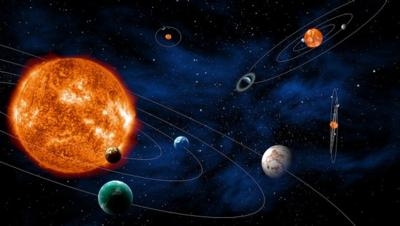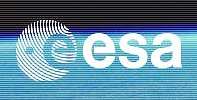Fri, Feb 21, 2014
Space-Based Observatory Will Search For Distant Planets
A space-based observatory to search for planets orbiting alien stars has been selected today as ESA’s third medium-class science mission. It is planned for launch by 2024. The PLATO – Planetary Transits and Oscillations of stars – mission was selected by ESA’s Science Program Committee for implementation as part of its Cosmic Vision 2015–25 Program.

The mission will address two key themes of Cosmic Vision: what are the conditions for planet formation and the emergence of life, and how does the Solar System work?
PLATO will monitor relatively nearby stars, searching for tiny, regular dips in brightness as their planets transit in front of them, temporarily blocking out a small fraction of the starlight. By using 34 separate small telescopes and cameras, PLATO will search for planets around up to a million stars spread over half of the sky. It will also investigate seismic activity in the stars, enabling a precise characterization of the host sun of each planet discovered, including its mass, radius and age.
When coupled with ground-based radial velocity observations, PLATO’s measurements will allow a planet’s mass and radius to be calculated, and therefore its density, providing an indication of its composition. The mission will identify and study thousands of exoplanetary systems, with an emphasis on discovering and characterizing Earth-sized planets and super-Earths in the habitable zone of their parent star – the distance from the star where liquid surface water could exist. “PLATO, with its unique ability to hunt for Sun–Earth analogue systems, will build on the expertise accumulated with a number of European missions, including CoRot and Cheops,” says Alvaro Giménez, ESA’s Director of Science and Robotic Exploration.
“Its discoveries will help to place our own Solar System’s architecture in the context of other planetary systems. All M3 mission candidates presented excellent opportunities for answering the major scientific questions that define our Cosmic Vision program.”

The four other mission concepts competing for the M3 launch opportunity were: EChO (the Exoplanet CHaracterisation Observatory), LOFT (the Large Observatory For x-ray Timing), MarcoPolo-R (to collect and return a sample from a near-Earth asteroid) and STE-Quest (Space-Time Explorer and QUantum Equivalence principle Space Test).
PLATO joins Solar Orbiter and Euclid, which were chosen in 2011 as ESA’s first M-class missions. Solar Orbiter will be launched in 2017 to study the Sun and solar wind from a distance of less than 50 million km, while Euclid, to be launched in 2020, will focus on dark energy, dark matter and the structure of the Universe. PLATO will be launched on a Soyuz rocket from Europe’s Spaceport in Kourou by 2024 for an initial six-year mission. It will operate from L2, a virtual point in space 1.5 million km beyond Earth as seen from the Sun.
Data from ESA’s recently launched Gaia mission will help PLATO to provide precise characteristics of thousands of exoplanet systems. These systems will provide natural targets for detailed follow-up observations by future large ground- and space-based observatories.
(Image provided by ESA)
More News
Aero Linx: Model Aeronautical Association of Australia MAAA clubs are about fun flying, camaraderie and community. For over 75 years, the MAAA has been Australia’s largest fl>[...]
Touchdown Zone Lighting Two rows of transverse light bars located symmetrically about the runway centerline normally at 100 foot intervals. The basic system extends 3,000 feet alon>[...]
“Discovery and innovation are central to our mission at Virgin Galactic. We’re excited to build on our successful record of facilitating scientific experiments in subor>[...]
How To Get A Story On Aero-TV News/Feature Programming How do I submit a story idea or lead to Aero-TV? If you would like to submit a story idea or lead, please contact Jim Campbel>[...]
Student Pilot Reported That During Rotation, “All Of A Sudden The Back Of The Plane Kicked To The Right..." Analysis: The student pilot reported that during rotation, “>[...]
 ANN's Daily Aero-Linx (05.02.24)
ANN's Daily Aero-Linx (05.02.24) ANN's Daily Aero-Term (05.02.24): Touchdown Zone Lighting
ANN's Daily Aero-Term (05.02.24): Touchdown Zone Lighting Aero-News: Quote of the Day (05.02.24)
Aero-News: Quote of the Day (05.02.24) ANN FAQ: Contributing To Aero-TV
ANN FAQ: Contributing To Aero-TV NTSB Final Report: Cirrus Design Corp SR20
NTSB Final Report: Cirrus Design Corp SR20




